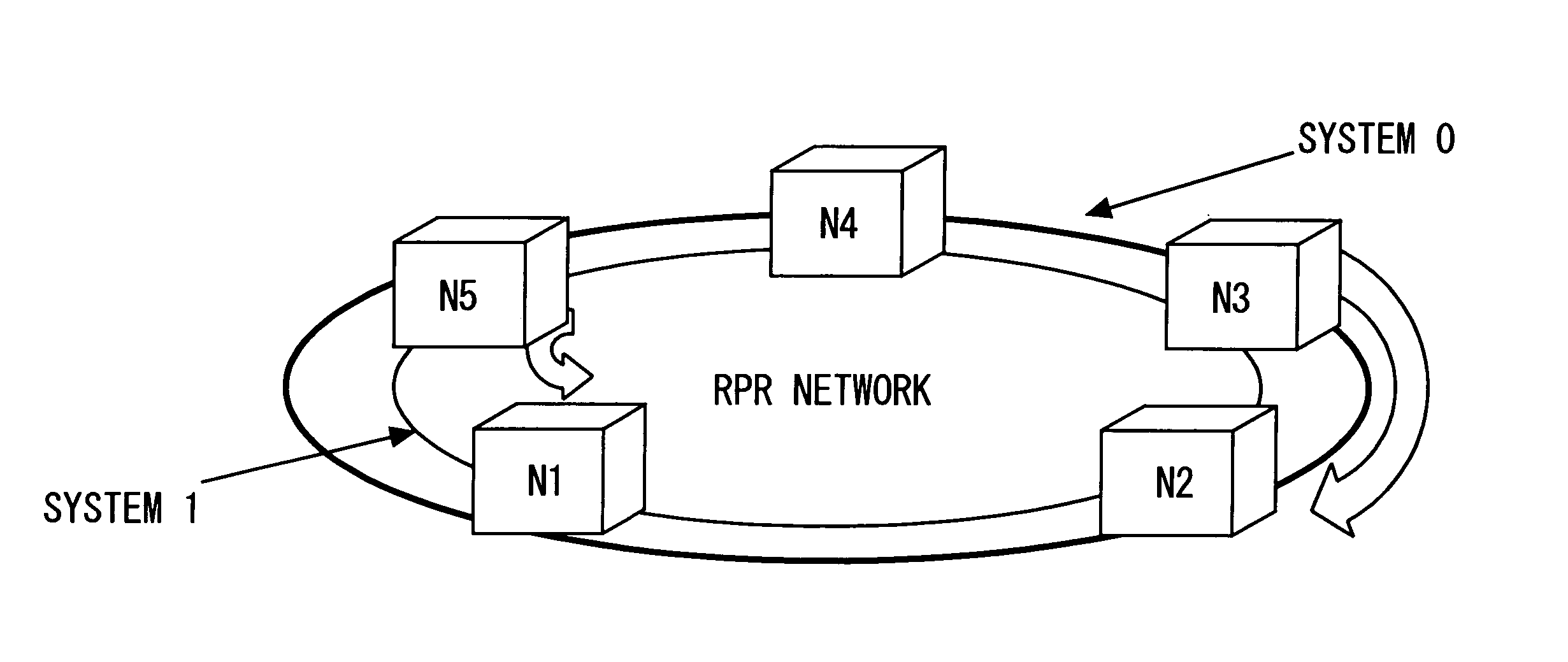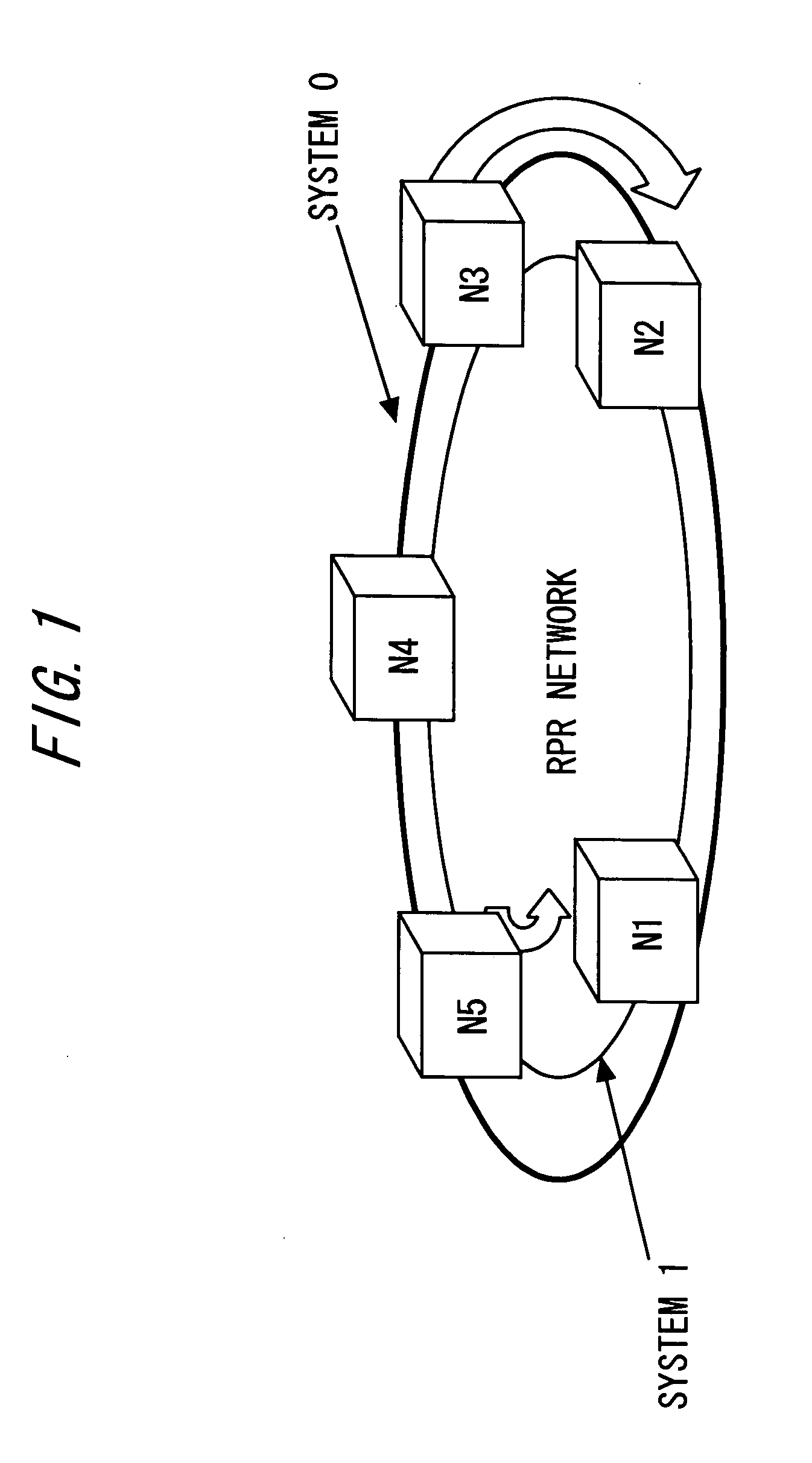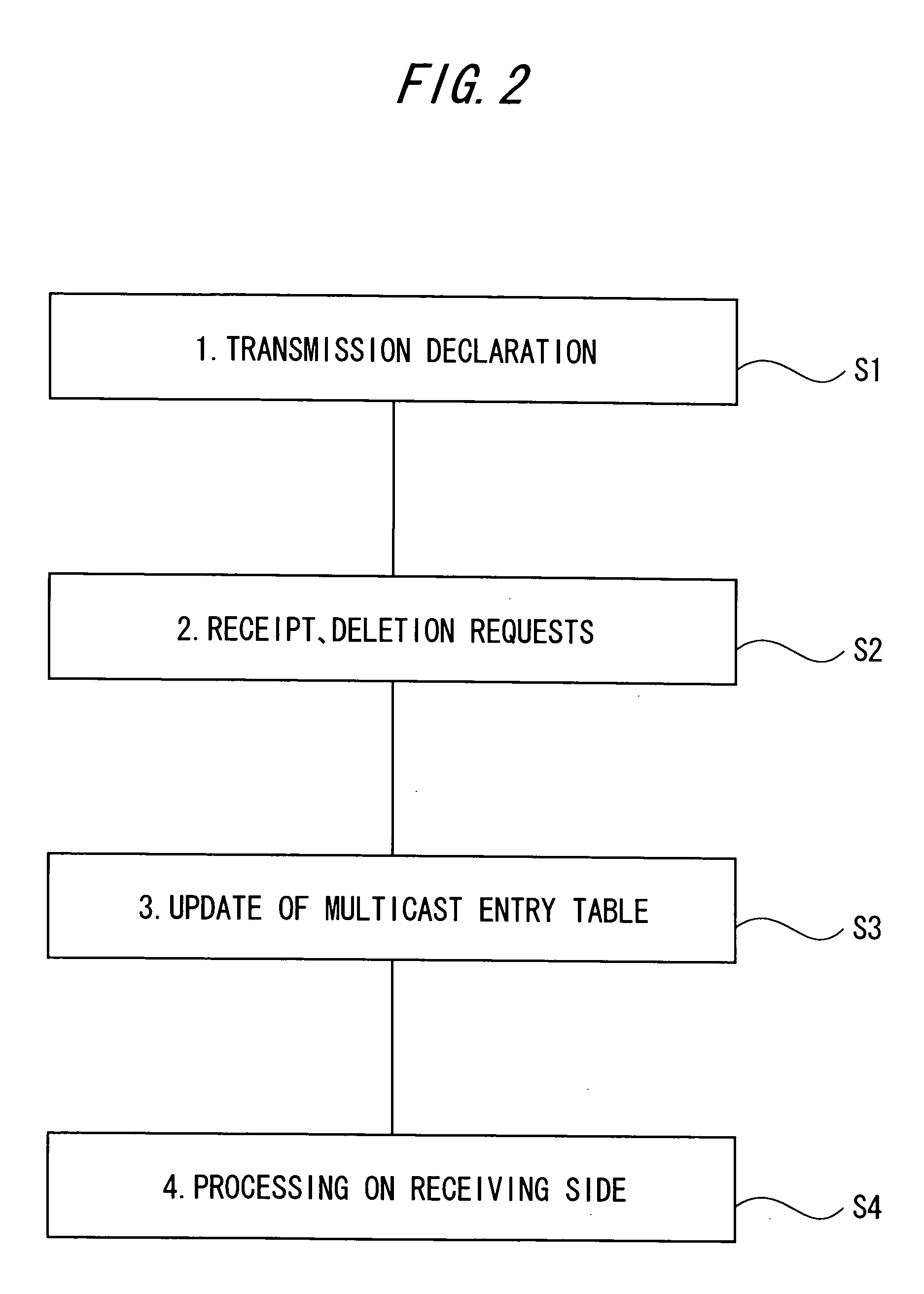Method for making effective use of bandwidth in multicast communication on ring network
a multicast packet communication and bandwidth technology, applied in the direction of time-division multiplex, data switching by path configuration, electrical equipment, etc., can solve the problem of difficulty in achieving the corresponding utilization efficiency of multicast communication, and achieve the effect of effective use of bandwidth in multicast communication
- Summary
- Abstract
- Description
- Claims
- Application Information
AI Technical Summary
Benefits of technology
Problems solved by technology
Method used
Image
Examples
embodiment
[0161] Next, a specific embodiment of the present invention is described.
[0162]FIG. 15 shows how the flow of multicast packets of the present invention differs from that of a conventional multicast packet transmission system. This embodiment assumes that the node N1 is the sending node and the nodes N2 and N5 are receiving nodes. A multicast packet (information) sent from the sending host A is received at the receiving nodes N2 and N5 via the sending node N1.
[0163] In the conventional system, the multicast packet passing on the RPR ring network is always provided to all nodes. However, according to the present invention, the multicast packet is provided only to nodes which request reception.
[0164] In this embodiment, the sending node and receiving nodes grasp the positional relation of the nodes on the basis of the topology table 30 shown in FIG. 4.
[0165] The sending node N1 recognizes a multicast address from the subordinate network by snooping and then the sending node N1 gene...
PUM
 Login to View More
Login to View More Abstract
Description
Claims
Application Information
 Login to View More
Login to View More - R&D
- Intellectual Property
- Life Sciences
- Materials
- Tech Scout
- Unparalleled Data Quality
- Higher Quality Content
- 60% Fewer Hallucinations
Browse by: Latest US Patents, China's latest patents, Technical Efficacy Thesaurus, Application Domain, Technology Topic, Popular Technical Reports.
© 2025 PatSnap. All rights reserved.Legal|Privacy policy|Modern Slavery Act Transparency Statement|Sitemap|About US| Contact US: help@patsnap.com



